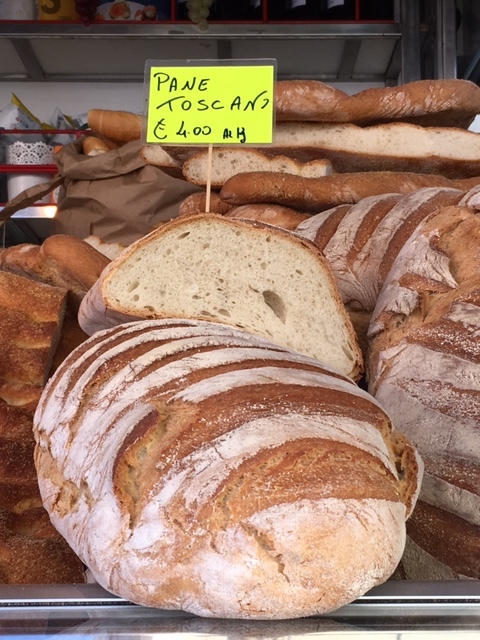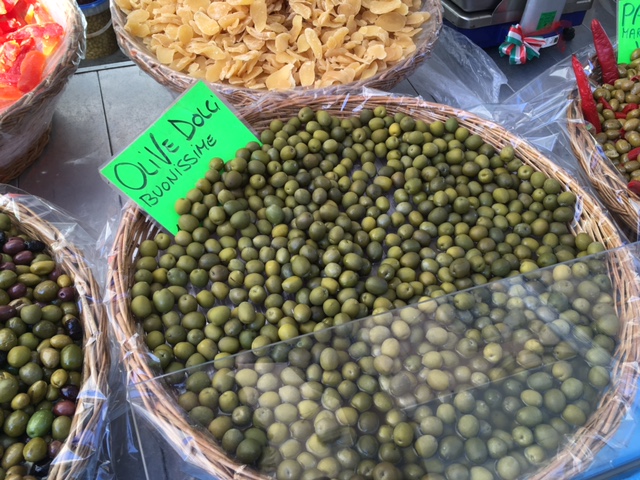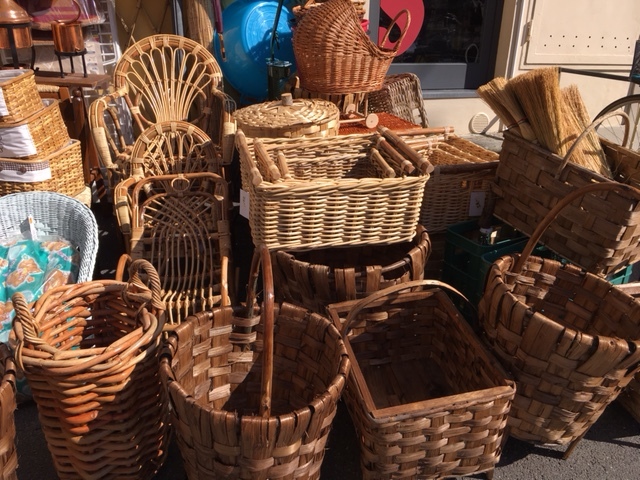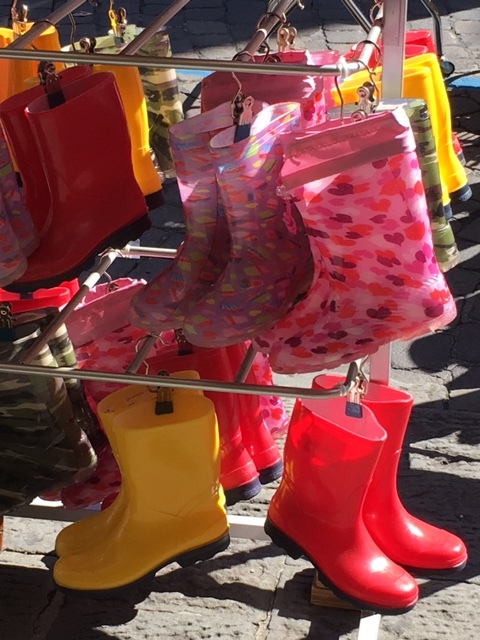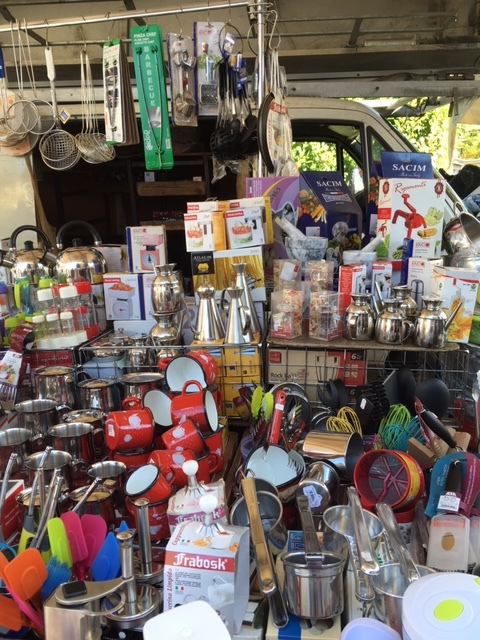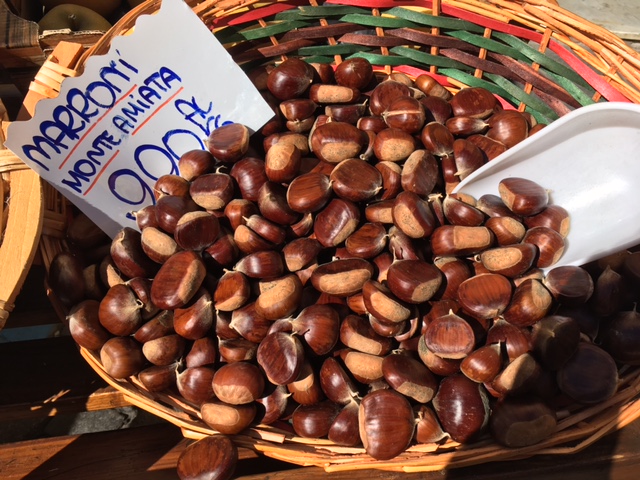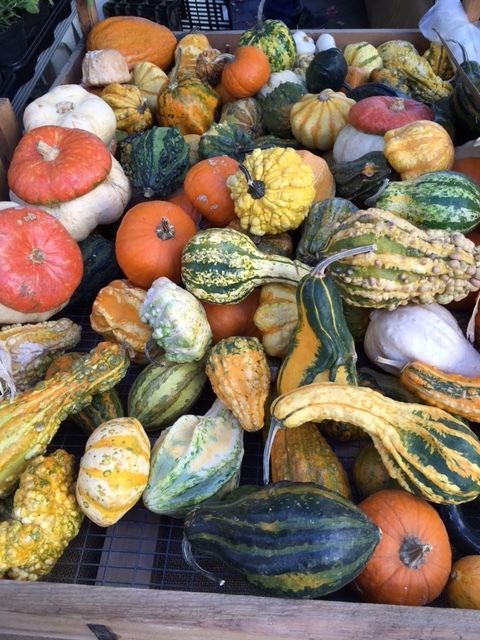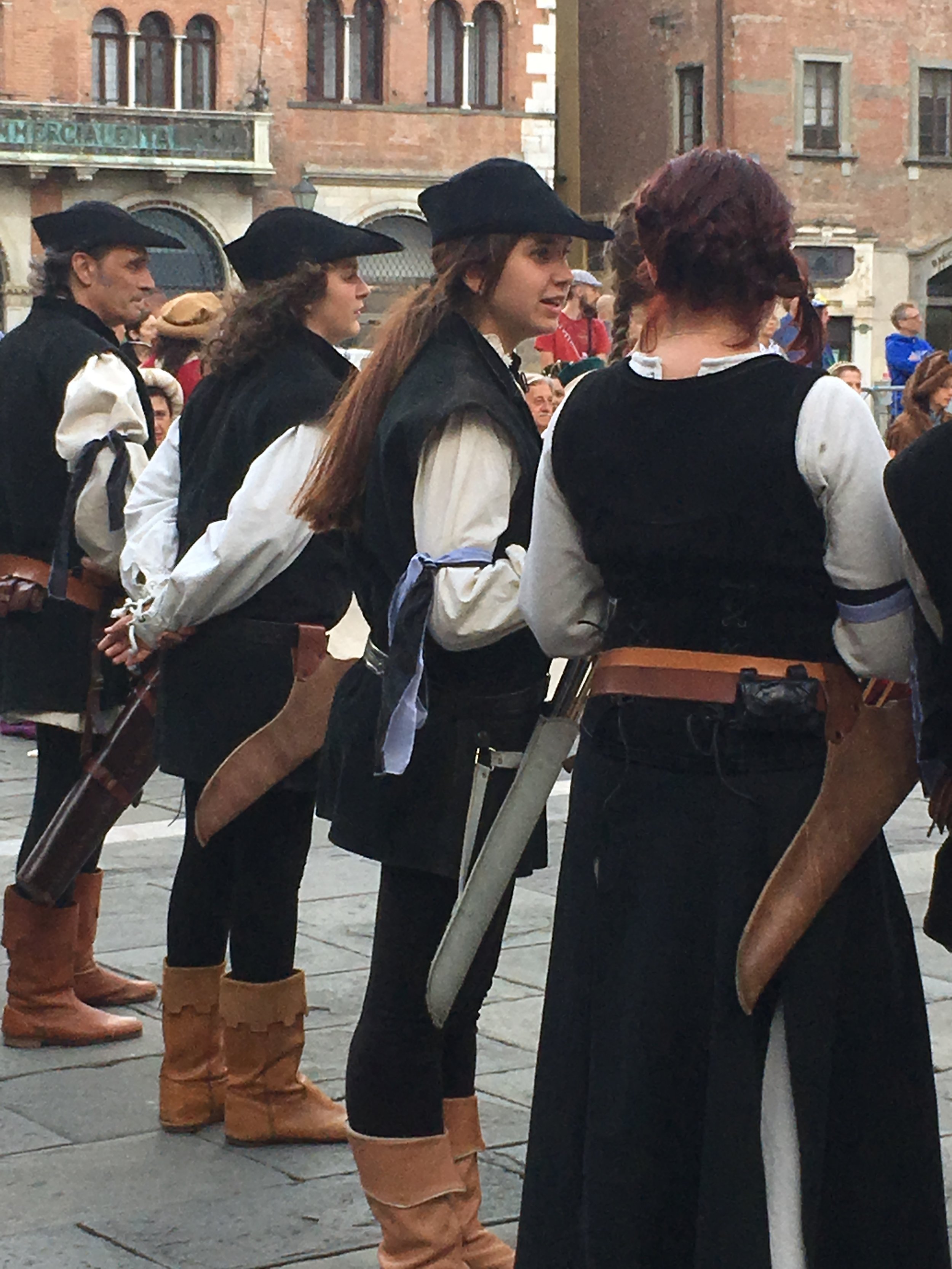An Italian Street Market
When I think of the street markets that take place in small towns throughout Italy, I picture the colors of seasonal produce, the sounds of the vendors, the smell of pungent cheeses.
I also picture busy shoppers, some with market baskets on their arms, others with wheeled carts for collecting purchases. Still others (mostly mammas or nonnas) push babies in strollers, stopping to browse and perhaps buy a sweet treat or toy. What fun I have strolling through these markets, whether shopping for dinner or just browsing.
In addition to food, the markets include booth after booth selling all types of necessities - clothing, pots and pans, tableware, shoes and socks, scarves, jackets, yarn. It's a colorful array of merchandise.
Many markets take place weekly, while others are special markets associated with festivals or celebrations. One such market takes place throughout the month of September in the Borgo Giannotti neighborhood of Lucca - it's part of the month-long celebration known as the Settembre Lucchese. This late summer/early fall market is especially lively and full of seasonal specialties - garlic braids, peppers, porcini mushrooms, chestnuts.
The market is one of many things that make September an ideal time for a visit to Lucca.
All of the photos in this post come from that special market - where I had a great time wandering, taking photos, and enjoying the sights and sounds of the market.
-post by JB
And, since the Borgo Giannotti neighborhood is home to my very favorite pasticceria, Sandra L' Angolo Dolce, I stopped in for a prima colazione (breakfast) of a cappuccino and a cornetto con crema (cream filled pastry). Perfect morning!
post by JMB
If you missed the earlier post about this amazing pasticceria here is the link: www.twopartsitaly.com/blog/2017/3/31/sandra-and-langelo-dolce

